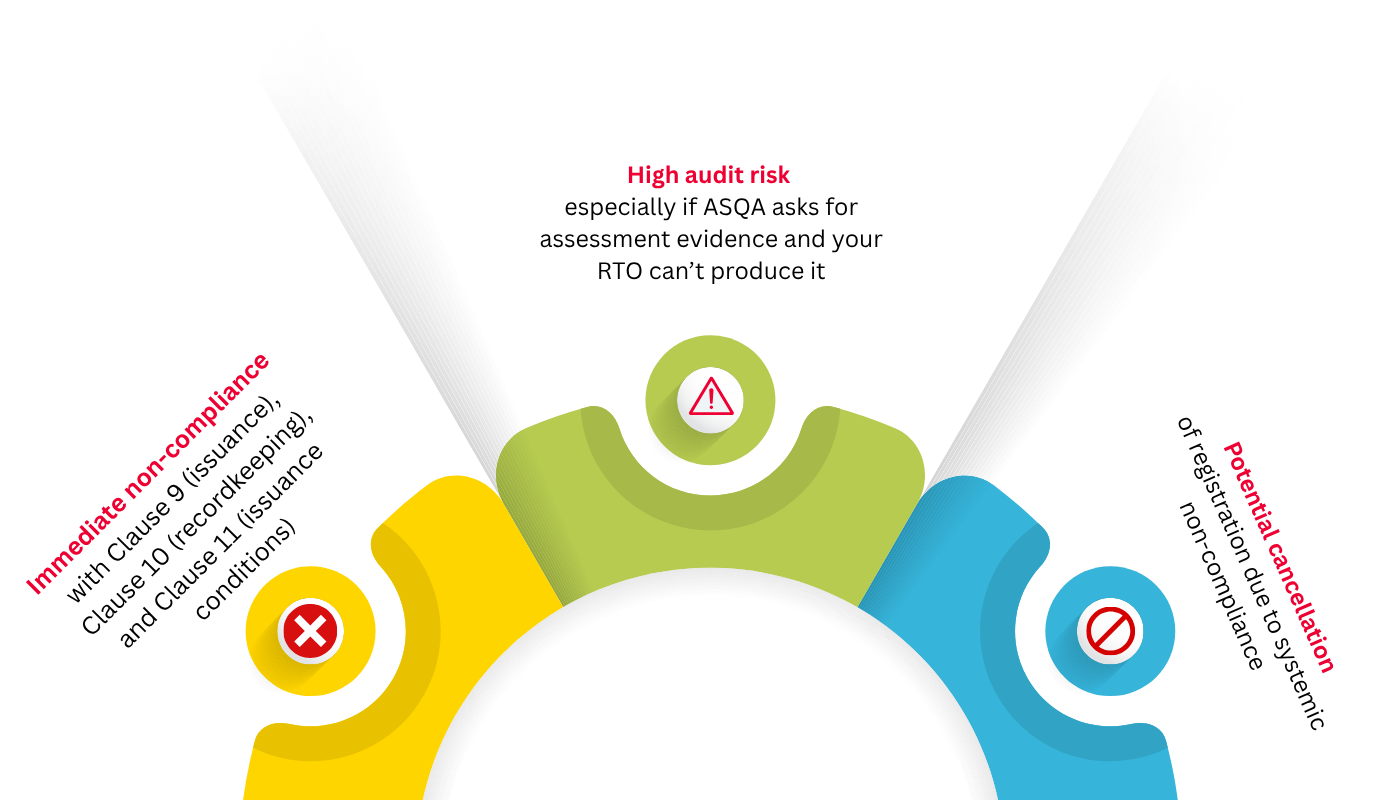“Certificate issuance is not just a final step – it’s a legal responsibility.”
Introduction: Why This Matters More Than Ever
In the Standards for RTOs 2025, issuing AQF certification documentation is clearly regulated under Clause 9 and Clause 11. Yet too often, Registered Training Organisations (RTOs) treat certificate issuance as an admin task, rather than a compliance-critical checkpoint.
But here’s the truth:
Issuing a certificate without validating assessment and fee completion can trigger an audit, lead to registration cancellation, and destroy your RTO’s credibility.
Let’s break it down in a simple, practical way – the kind of approach that aligns with the Marketing Made Simple philosophy. Because nothing sells your RTO better than being reliable, trusted and fully compliant.
The Hidden Danger: Issuing Certificates Without Assessment Review
Under Clause 10 of the Standards for RTOs 2025, RTOs must retain all assessment evidence (including RPL) for 2 years after the completion of the training product.
If your RTO issues a certificate without checking assessment completion and retention, you face:

- ❌ Immediate non-compliance with Clause 9 (issuance), Clause 10 (recordkeeping), and Clause 11 (issuance conditions)
- ❌ High audit risk – especially if ASQA asks for assessment evidence and your RTO can’t produce it
- ❌ Potential cancellation of registration due to systemic non-compliance
Bottom line: Always check that assessment is complete, valid, and stored securely before issuing any certificate.
Why a Certificate Compliance Check Can Save Your RTO
Implementing a Certificate Compliance Check acts like a safety net. It ensures:
| Risk | Mitigation |
|---|---|
| Audit due to invalid certificates | Internal compliance checklist verifies every condition |
| Issuing certificates to ineligible students | Final validation step ensures training and fees are complete |
| Gaps in recordkeeping | Verifies that assessment and USI are recorded correctly |
| Damage to reputation and trust | Certificates reflect genuine, verified competence |
Certificate Compliance Checklist
- Student completed all units of the training product or eligible for a Statement of Attainment
- Final assessment is completed, validated, and retained for 2 years (per Clause 10)
- RPL evidence is on file (if applicable)
- Student has paid all fees
- USI has been verified
- Certificate is issued through the SMS only (no manual templates)
- Certificate includes:
- RTO name, code, logo
- AQF code and title
- NRT logo
- Authorised signature
- AQF recognition statement
- Special streams, descriptors, or languages (if applicable)
- Certificate is issued within 30 calendar days from the date of final assessment
Want a done-for-you template?
👉 Download the Certificate Compliance Checklist – With Sign-Off Section
Frequently Asked Questions (FAQs)
Q1: What’s the 2-year retention rule for assessments?
A: RTOs must retain all assessment evidence (including RPL) for 2 years after the training product is completed. This means the qualification or unit of competency, not individual tasks.
Q2: Can I issue a certificate if a student hasn’t paid fees?
A: No. Clause 9(2)(b) requires that all agreed fees be paid before certification.
Q3: What if we lose the assessment records after issuing the certificate?
A: If ASQA audits your RTO and you can’t produce evidence, the certificate is considered invalid and your RTO may face serious sanctions.
Q4: What about qualifications completed under RPL?
A: RPL is part of the assessment process. All RPL documentation must be complete and stored for 2 years.
Final Thoughts: Compliance Is Your Marketing Superpower
Don’t treat certification like admin. Treat it like a legal checkpoint and a trust-builder.
“Every certificate you issue speaks volumes about your RTO’s integrity, systems, and quality.”
✅ Promote your compliance processes in your Student Handbook
✅ Highlight your commitment to assessment validation in your marketing
✅ Train your team using the checklist – and document the process
🔗 Bonus Resource
👉 Download the Certificate Compliance Checklist Template (includes sign-off, date, and audit readiness guide)
Disclaimer:
The information presented on the VET Resources blog is for general guidance only. While we strive for accuracy, we cannot guarantee the completeness or timeliness of the information. VET Resources is not responsible for any errors or omissions, or for the results obtained from the use of this information. Always consult a professional for advice tailored to your circumstances.






